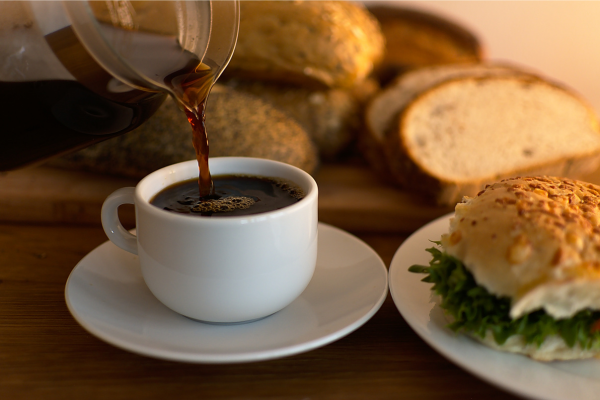Espresso isn’t just a type of coffee—it’s a method that brings out the most intense, complex flavors from a small shot of liquid gold. But to make great espresso, your choice of beans is crucial. The right beans can deliver a balanced, bold, and aromatic experience. The wrong beans can result in bitterness, weak body, or poor crema.
In this article, you’ll learn what makes a great espresso bean, how to choose the best coffee for your espresso machine, and what roast levels, origins, and blends to look for.
What Makes Espresso Unique?
Espresso is made by forcing hot water through finely ground coffee at high pressure (usually 9 bars). This method extracts intense flavors and oils quickly, producing a rich, concentrated drink with a thick crema on top.
Because espresso is such a concentrated brewing method, it highlights every nuance of the coffee—both good and bad. That’s why bean quality and roast style are so important.
Should You Use Special Espresso Beans?
There’s no such thing as an “espresso bean” by nature—all coffee beans can technically be used for espresso. However, roasters often develop specific blends or roast profiles optimized for espresso extraction.
These beans are usually:
- Roasted slightly darker for better body and crema
- Blended for balance in sweetness, acidity, and bitterness
- Selected for lower acidity, since high-acid beans can taste sharp or sour in espresso
While single-origin espresso is becoming more popular, many cafés and home baristas still prefer blends for consistency and depth.
What Roast Level Is Best for Espresso?
Roast level plays a huge role in how espresso tastes.
Dark Roast
- Most traditional choice for espresso
- Produces a bold, rich, chocolatey flavor
- Less acidity and more bitterness
- Creates excellent crema
Perfect for milk-based drinks like cappuccinos and lattes, where stronger flavors cut through the milk.
Medium Roast
- Balanced and sweet, with more complexity
- Highlights some origin characteristics (fruit, floral, nutty notes)
- Works well as both a straight espresso and with milk
- Preferred by many specialty coffee shops
Medium roast is a great starting point if you want a well-rounded espresso with nuanced flavors.
Light Roast
- Less common for espresso due to high acidity
- Highlights origin-specific flavors (berry, citrus, floral)
- More difficult to dial in properly
- Often used by expert baristas for single-origin espresso
Light roast espresso is a great option for adventurous coffee lovers, but it requires more precision in grind size, temperature, and extraction time.
What Flavor Profiles Work Best?
The best espresso flavor profile depends on your personal taste and how you drink your espresso.
If You Like Espresso Straight:
- Look for medium roast single origins or well-balanced blends
- Ideal flavor notes: cocoa, caramel, mild fruit, nuts
- Smooth body with low-to-moderate acidity
If You Prefer Milk-Based Drinks:
- Go for medium-dark to dark roasts
- Beans with chocolate, spice, or toasted nut notes pair well with milk
- Higher body helps the espresso stand out in lattes and cappuccinos
For Bright, Complex Shots:
- Try washed African beans (e.g., Ethiopia, Kenya) at a medium roast
- Expect notes of citrus, berry, and florals
- Great for exploring new flavor experiences
Single-Origin vs. Blends: Which Is Better?
Blends
- Designed for balance and consistency
- Usually combine beans from different countries
- Ideal for beginners and milk-based espresso drinks
Single-Origin
- Offers unique, distinct flavors
- Highlights the specific characteristics of one region
- Best for experienced brewers and straight shots
If you’re new to espresso or want something reliable, start with a well-reviewed blend. If you’re looking to experiment with flavor, explore light or medium-roast single-origin beans.
Recommended Origins for Espresso Beans
Each coffee-producing region has its own signature characteristics. Here’s a quick guide to help you choose:
- Brazil: Nutty, chocolatey, low acidity—great base for blends
- Colombia: Balanced, sweet, smooth—excellent for all espresso styles
- Ethiopia: Fruity, floral, bright—ideal for single-origin espresso
- Guatemala: Cocoa, spice, citrus—versatile and complex
- Sumatra: Earthy, herbal, full-bodied—great for bold, dark espresso
What About Robusta in Espresso?
Some espresso blends include Robusta beans, especially Italian-style roasts. Robusta has:
- More caffeine
- Stronger, bitter taste
- More crema production
A small amount of Robusta (10–20%) can enhance body and crema, but too much can result in bitterness. Most specialty espresso blends are 100% Arabica, but if you like a punchier shot with thick crema, consider blends that include a touch of Robusta.
Tips for Buying Espresso Beans
- Check the roast date: Choose beans roasted within the last 2–3 weeks.
- Buy in small batches: Espresso flavor changes quickly with age.
- Grind fresh: Use a burr grinder and grind just before brewing.
- Buy from specialty roasters: They usually offer better quality and more transparency about the beans.
- Read the flavor notes: Look for tasting descriptions that match what you enjoy.
Final Thoughts: Choose Beans That Match Your Taste
There’s no one-size-fits-all answer to the best espresso beans. It depends on how you drink your espresso, what flavors you enjoy, and how comfortable you are adjusting grind size and brew time.
Start with a trusted medium roast blend to get consistent, delicious results. As you gain confidence, experiment with single-origin beans and lighter roasts to explore espresso’s incredible range of flavors.
With the right beans, your espresso can go from simply good to truly unforgettable.

